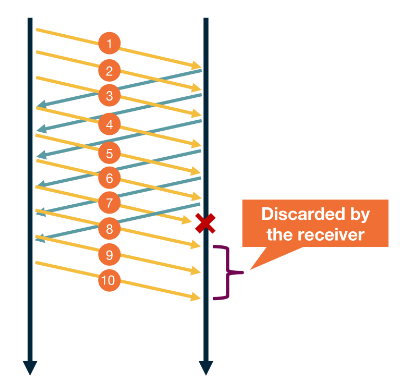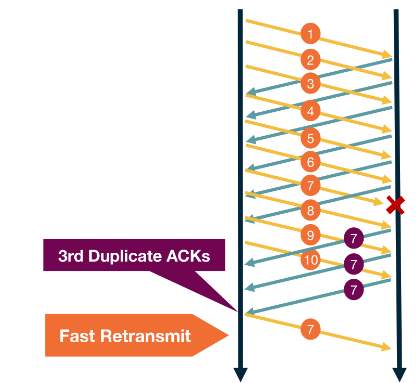Reliable transmission of TCP messages
TCP uses sequence numbers with acknowledgements to increase the reliability of messages. If a message was corrupted or not received it will resend that segment.
Automatic Repeat Request (ARQ)
Link to originalAutomatic Repeat Request (ARQ)
This is the way TCP makes messaging reliable. This uses a combination message acknowledgements and message timeouts to determine if it needs to resend a segment. The timeout is a length of time before it reseeds the message. This will need to be fine tuned by guessing the Round trip time (RTT).
The most basic implementation of ARQ stops and waits to check if the message was received.
Stop and wait ARQ
Link to originalStop and wait ARQ
This is an implementation of ARQ that sends some messages and wait for an acknowledgement before sending more. It uses a window size determined by the Transmission control in TCP. It will only send the window size worth of unacknowledged message before stopping to wait for a new acknowledgement message or the timeout window to be exceeded.
In TCP the acknowledgement header is set to be the next sequence number the receiver is waiting to get. There are different ways you can handle unacknowledged messages.
Go back N
Link to originalGo back N
This is a method of handling unacknowledged messages. When a sequence number is either skipped or timed out the send starts re-sending segments from the missing number.
Fast retransmit
Link to originalFast retransmit
This is a method of handling unacknowledged messages. The keeps sending packages until it sees a package hasn’t be acknowledged 3 times. Then it restransmits that message before the timeout.

